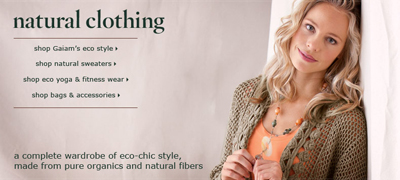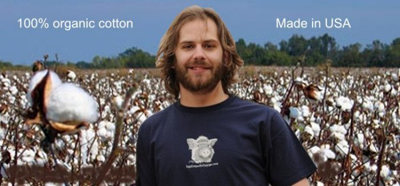California Agricultural Technology Institute
Assessing organic fashion
Consumer study provides insights into appeal of organic cotton fabrics
Increasing consumer concerns over the environment, global social inequities and personal health have spurred a growing green movement that influences not only what people eat, but what they wear.
The next green market to emerge following organic food products may be clothing, with organically-produced cotton and other fibers prized as more eco-friendly fabrics.
Green fashion refers to goods that feature the use of chemically free and environmentally safe and sustainable materials in their production, reported Fresno State consumer sciences professor and researcher Lizhu Davis. With this trend, more consumers are turning to fabrics made from materials such as organic cotton and recycled polyester fibers. To cater to consumer demands, more apparel companies and retailers are targeting this niche market, she noted.
Well known companies such as Patagonia, Nike and Timberland are pioneers in using recycled plastic and organic materials, Davis said, and some mainstream brands such as Guess Inc., Joe s Jean and Seven For All Mankind have introduced organic merchandise.

Demand for organic cotton, estimated to account for one percent of global production in 2008, has been growing by about 40 percent annually since 2001. According to the tracking agency Organic Exchange, global retail sales of organic cotton apparel and home textiles reached an estimated $4.3 billion in 2009 a 35 percent increase over 2008.
The trend is expected to continue even though green fashion goods are typically more costly, Davis said.
Why?
That was the basis of an informal study she conducted recently of shoppers who purchased green goods.
We re seeking to learn whether this is simply a fad or a consumer trend that will continue, she said. The findings will provide insights for companies aiming to better target green fashion consumers.
The research team used a question-answer survey approach to obtain information from participants who considered themselves green shoppers.
Results showed that green shoppers feel organically-produced fabrics are healthier to wear, since the fibers have less exposure to chemicals. Some respondents also related that green fabrics are more durable, so they can be worth the extra cost.

A common characteristics the shoppers revealed was the high value they place on environmental sustainability, Davis noted.
Although health benefits were important for some participants, others mainly focused on the environmental benefits from consuming green fashion goods. Those participants strongly support the philosophy of the green movement and seek to reduce their carbon footprint in order to better maintain the health of the earth as a whole, she said.
Based on the survey results, Davis is recommending to fashion industry leaders to continue to improve quality and design of green fashion merchandise, as consumers want to feel they are getting a good product for their money.
The fashion industry also should focus more on consumer education.
In-store displays with information on the benefits of consuming green fashion goods from the product benefits to social and environmental benefits, can help consumers make better purchase decisions, she said. With the right strategies and practices, the fashion industry can become greener and meet consumers needs and wants better.
Partial support for this project was provided by the California State University Agricultural Institute (ARI). For more information on the survey and/or results, contact Davis at lidavis@csufresno.edu.